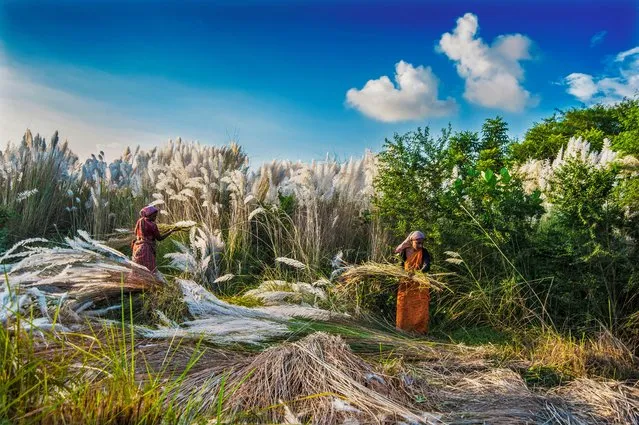
“The Autumn’s Beauty” by Amitava Chandra. “This unique white grass, a gift from nature to enhance the beauty of autumn, is colloquially called kash. For a short period during autumn it erupts in abundance without any cultivation or help from man”. Taken in Kolaghat, West Bengal. (Photo by Amitava Chandra/2016 Royal Society of Biology Photographer of the Year competition)
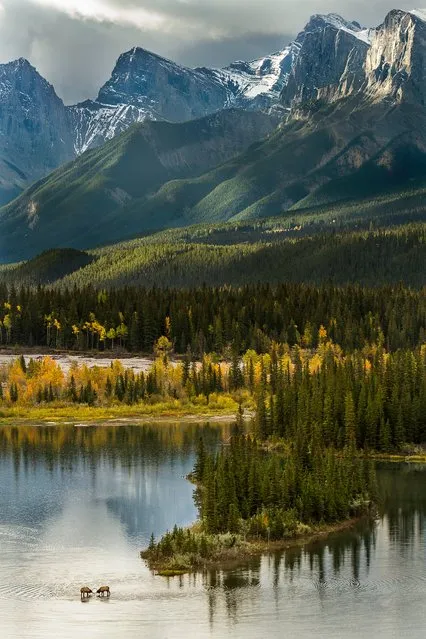
“Fighting Bulls” by Robert Sommer. “I discovered these two huge elk-bulls in the middle of the river on a hike in the Banff national park. They proceeded to fight in front of the Rocky Mountains. The elk bulls are enormous and dangerous during heat, but they seem so small and fragile in their environment, especially in front of this fantastic mountain range”. Taken in Bow river, Banff national park, Canada. (Photo by Robert Sommer/2016 Royal Society of Biology Photographer of the Year competition)
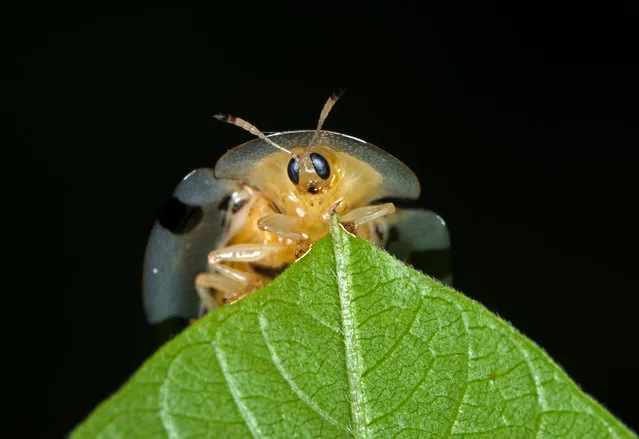
“Little Giant” by Partha Pratim Saha. “Spotted tortoise shell beetles ( Aspidomorpha miliaris) are small, oval, turtle-shaped beetles. They are seldom a serious pest, but tortoise beetles can cause considerable defoliation during severe infestation”. Taken in Kolkata, India. (Photo by Partha Pratim Saha/2016 Royal Society of Biology Photographer of the Year competition)
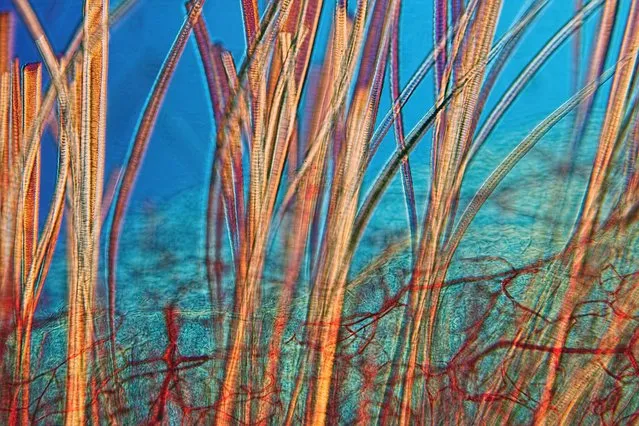
“Skin of the lip of a cat” by David Linstead. “This microscope image is taken from a vintage slide mount of the lip of a cat by the noted Victorian slide mounter Edmund Wheeler. It shows the skin surface, hairs (fur) and capillary blood supply of the skin surface. We are used to seeing the “big”, the fur of a cat’s coat, but this image produces an unusual view of the “small”, the individual hairs and the minute capillaries that nourish them with blood. This example shows great skill in the injection of carmine dye into the capillaries and the preservation of anatomical detail”. Taken in Kent, UK. (Photo by David Linstead/2016 Royal Society of Biology Photographer of the Year competition)
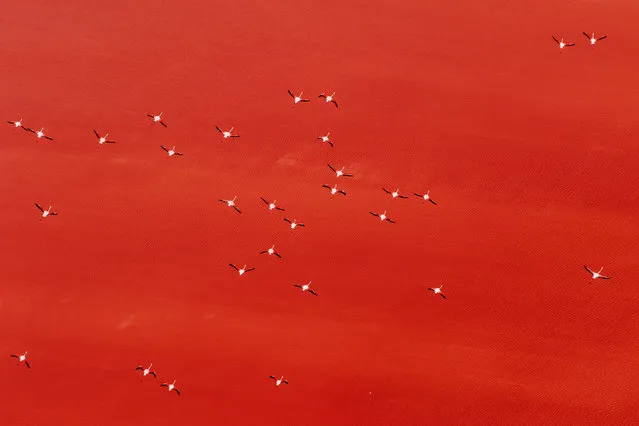
“Pink Over Pink” by Daniel Buron. “Flamingos feed on small crustaceans, algae and other microscopic plankton components. Some of these food sources contain carotenoid pigments which give flamingos their characteristic pink plumage. Some salinas, such as this, have ideal conditions for halophilic bacteria and flagellate unicellular alga Dunaliella salina, which give watch this deep red colour”. Taken in Salinas de la Tapa, El Puerto de Santa María, Spain. (Photo by Daniel Buron/2016 Royal Society of Biology Photographer of the Year competition)
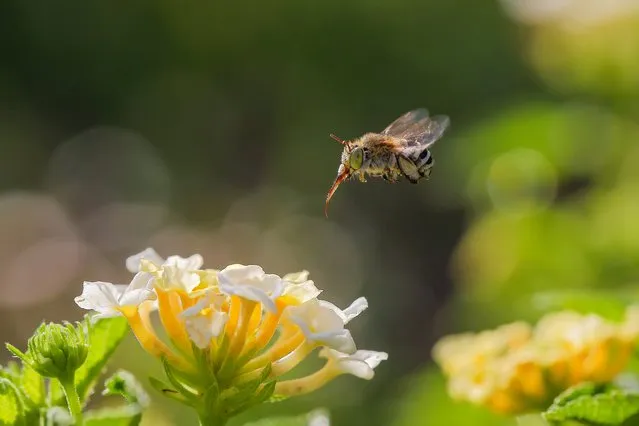
“Tasty Nature” by Dipesh Bhatt. “The blue banded bee (Amegilla cingulata) is pointing this sheath towards the flowers in preparation for sipping nectar”. Taken in Gujarat, India. (Photo by Dipesh Bhatt/2016 Royal Society of Biology Photographer of the Year competition)

“Hunt for mosquitoes” by Lukasz Boch. “The tiny mosquito is the beginning of the road for terns. In the future when the tern grows up, he will start to hunt for larger food like dragonflies and fish”. Taken in Poland. (Photo by Lukasz Boch/2016 Royal Society of Biology Photographer of the Year competition)
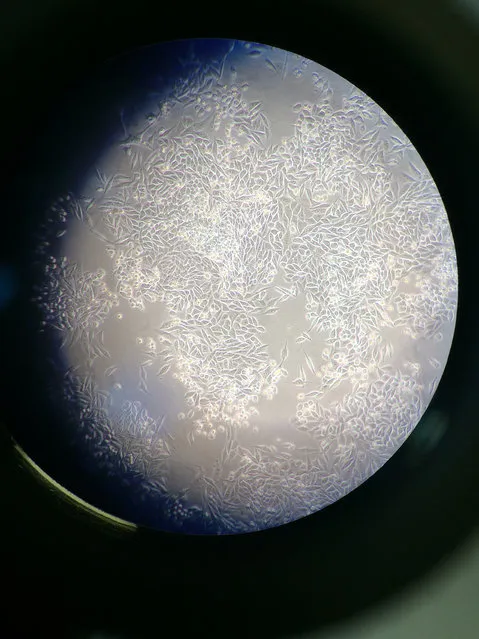
“Moon:cells” by Matthew Lee. “This image is of PC3 cells, which are highly aggressive prostate cancer cells that I work with in my research. When looked at as a whole, the image looks vaguely like that of the moon. By eye, the cell clumps represent craters and the areas where there are no cells represent the smooth areas of the moon”. Taken in a cell lines laboratory, Bristol, UK. (Photo by Matthew Lee/2016 Royal Society of Biology Photographer of the Year competition)
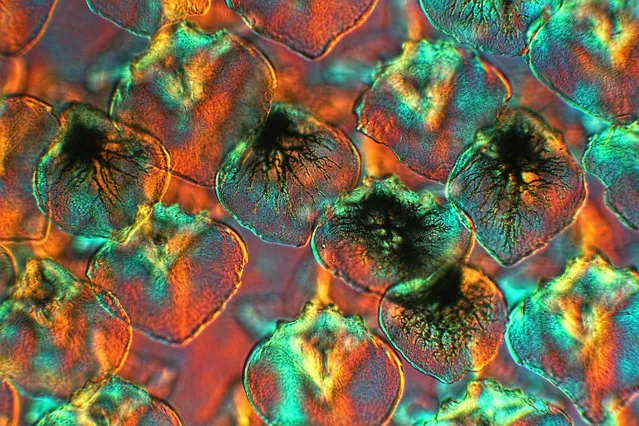
“Pigment scales in the skin of a porbeagle shark” by David Linstead. “This microscope image, taken from a Victorian slide mount, shows several pigment scales scattered in the skin of a porbeagle shark (Lamna nasus). Colour is produced using the illumination technique of differential interference contrast in the microscope, together with an adjustable compensator (lambda plate), so called “colour DIC”. Here, “big” is the pattern on the skin of a large shark and “small” is the individual scales”. Taken in Kent, UK. (Photo by David Linstead/2016 Royal Society of Biology Photographer of the Year competition)
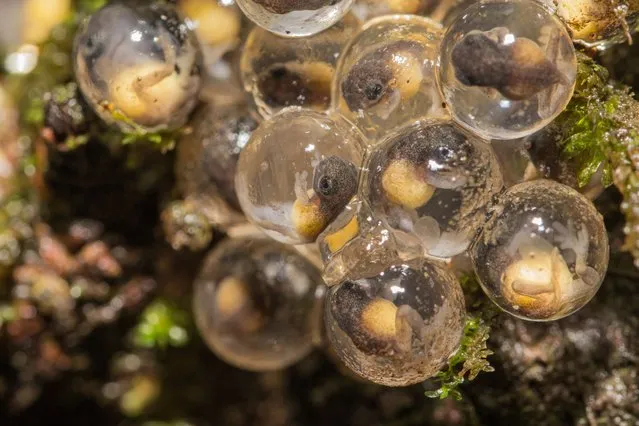
RSB young photographer of the year winner: “The Beginning” by Pradyuman Samant (Age 16). “We have a huge planet with some tiny creatures we often ignore. Some people find it gross to even look at them and some aren’t even bothered. But no matter how big our world is, the beginning is always small. These bush frog tadpoles will be part of our “big” world someday, while others will be washed away in the rain”. Taken in Maharashtra, India. (Photo by Pradyuman Samant/2016 Royal Society of Biology Photographer of the Year competition)
30 Sep 2016 09:32:00,
post received
0 comments
